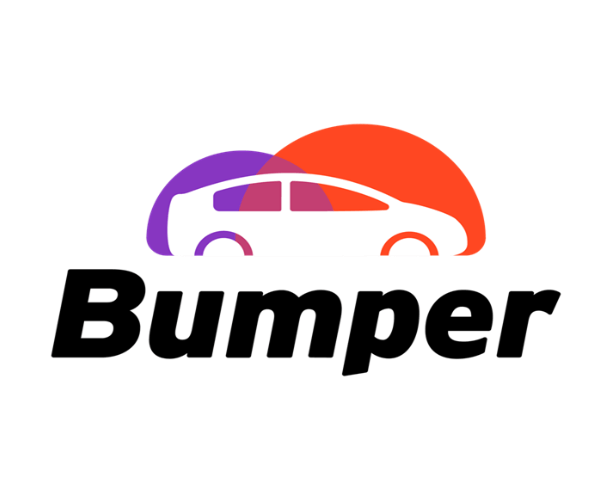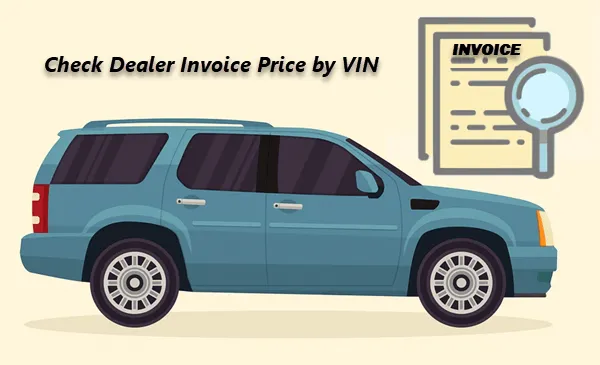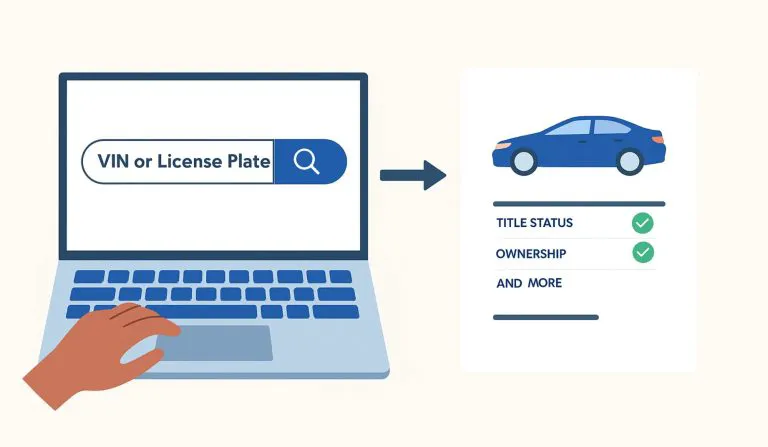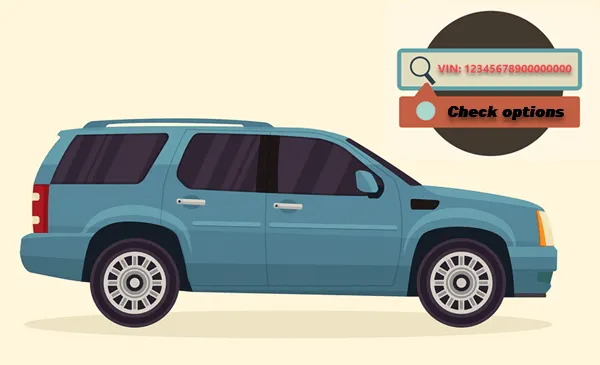Bumper vs. CARFAX: How to Choose the Right VIN Lookup Service
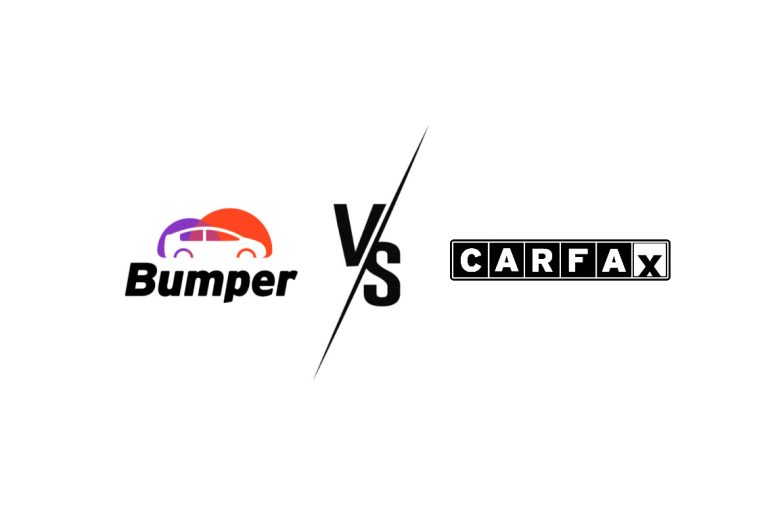
I believe most of you are already familiar with Carfax. It’s often the name most people think of when it comes to vehicle history reports (VHR). But Carfax isn’t the only player in this space. Over the years, many competitors have entered the market, and some of them offer solid alternatives — Bumper being one of them.
Both services offer VIN lookups and similar features, but they differ in pricing, data sources, and more. This guide will break down the key differences so you can quickly see which one fits your needs best.
The Verdict
- Bumper is the cost-effective choice, since much of the same information in a CARFAX vehicle history report can be found for less money.
- They excel in different areas: Bumper provides extremely detailed specs and market value insights, while CARFAX offers very comprehensive service records.
- Running reports from both providers can be complementary and give a fuller picture.
- Neither service can guarantee 100% accuracy or completeness, since they rely on data that is actually reported to them.
Bumper vs. CARFAX: Pricing
Price is one of the biggest factors to consider, especially if you’re still in the browsing stage and need to run reports on multiple vehicles before making a decision{{According to J.D. Power, car buyers spend at least three months researching vehicles before making a purchase, which can mean running quite a few vehicle history reports.}}. In this area, Bumper and Carfax differ quite a bit.
According to CARFAX’s official website, a single report costs $44.99. If you purchase two or four reports together, the per-report price drops slightly, but it’s still on the expensive side compared to most other services.
In comparison, Bumper is much more affordable. It offers a membership plan at just $27.99 per month, which lets you run up to 50 reports during that period. There’s also a low-cost trial available, so you can test the service for seven days before you’re charged the full subscription price.
If you’re worried that Bumper’s budget-friendly pricing comes at the cost of quality, there’s no need to. We’ll dive into the detailed comparison next so you can see how it stacks up against CARFAX.
Bumper vs. CARFAX: Data sources
When it comes to data sources, Bumper and CARFAX each have their own advantages.
Bumper: approved to pull data directly from the official NMTVIS database
Compared with many other providers, Bumper has a clear advantage: it’s one of the few services officially approved by NMVTIS.
But what does that mean?
NMVTIS (National Motor Vehicle Title Information System) is the only U.S. government-mandated federal database for vehicle title and brand history. It collects data from state motor vehicle titling agencies, insurance carriers, auto recyclers, junk yards, and salvage yards, all of which are required by federal law to report on a regular basis. Federal law also requires the information to be complete and accurate.
With this direct access, Bumper can pull extensive title, salvage, and other critical vehicle history information straight from this official database. For example, in the sample report shown below, Bumper retrieved salvage records reported by USAA through NMVTIS.
If you are interested, you can find an exhaustive list of all NMVTIS-approved providers on the official NMVTIS website (see screenshot below), with Bumper appearing right at the top.
By contrast, the note under the list clarifies that public consumers cannot obtain NMVTIS Vehicle History Reports from Carfax. As a result, CARFAX rely on alternative sources instead, such as individual state DMVs or a wide range of corporate partners to gather similar information.
In addition to the NMVTIS, Bumper also pulls data from the following sources, many of which are government agencies or other highly authoritative organizations:
- FBI National Crime Information Center (NCIC)
- National Highway Traffic Safety Administration (NHTSA)
- American Association of Motor Vehicle Administrators (AAMVA)
- J.D. Power
- Dealerships
- Auction listing websites
- And more…
📌Bumper’s official website has a page that clearly explains how they source their vehicle history report data.
Carfax: extensive partnerships with industry partners
CARFAX is known for its extensive and long-established data partnerships. It collects information from thousands of sources, including state DMVs, insurance companies, law enforcement, auto auctions, repair shops, and dealerships. This breadth makes it strong for uncovering accidents and service records (though coverage can still vary by state and vehicle).
Below are the two categories of sources listed on the Carfax website: public sources and corporate sources:
In most cases, CARFAX provides the most detailed service and maintenance records available for a vehicle. Even well-known competitors like AutoCheck typically cannot match the depth and completeness of CARFAX’s service history.
Which report is more accurate?
It’s hard to definitively say one service is more accurate than the other. As mentioned earlier, their data sources aren’t exactly the same. So depending on the VIN, in some cases Carfax may provide more complete records, while in others Bumper might surface details Carfax didn’t capture. And sometimes, the two reports may not differ much at all.
“I was looking at a 2022 vehicle high trim with pretty low miles and low price. The carfax shows clean title but bumper.com says there’s a salvage title.” (From a Reddit user{{r/UsedCars [Wild-Recognition8210]. (2024, Aug 24). Carfax and Bumper.com [Online forum post] Reddit. https://www.reddit.com/r/UsedCars/comments/1f07i94/carfax_and_bumpercom/}})
Also, it’s important to be clear about one thing: whether it’s CARFAX, Bumper, or any other vehicle history report provider, none of them are perfect.
Vehicle history reports can only show information that has been officially recorded and shared with their data sources. That means if an accident was never reported to insurance, or if a repair was done at a small shop that doesn’t upload records, it might not appear in the report at all.
This doesn’t make the reports useless — far from it. They’re still one of the best ways to uncover hidden issues, spot red flags like salvage titles, or confirm odometer readings, helping you quickly eliminate many of the worst cars and save money and time. But it’s smart to treat them as one piece of the puzzle rather than the entire picture. We strongly recommend that you use it alongside a test drive, an independent pre-purchase inspection (PPI) by a trusted shop/mechanic as well as an open conversation with the seller.
Bumper vs. CARFAX: What’s included in each report
Below are the types of information that may potentially appear in Bumper and CARFAX reports. The two share many common sections, but each also includes some unique information. For example, Bumper offers market value data, in-depth ownership cost information, and extremely detailed specs. These differences largely come down to the variation in data sources.
One important note though: not every report will contain data for every section, as it depends on what’s actually available for that vehicle.
| Data type | Bumper | CARFAX |
|---|---|---|
| NMVTIS data | ✅ | ❌ |
| Photos (e.g. auction images) | ✅ | ✅ |
| Vehicle specs | ✅Extremely detailed | Minimum |
| Accident history | ✅ | ✅ |
| Title & salvage records | ✅ | ✅ |
| Odometer readings | ✅ | ✅ |
| Service & maintenance | Limited | ✅ Extremely detailed |
| Ownership history{{Because of the Driver’s Privacy Protection Act (DPPA), personal owner details (like name and address) aren’t available through public lookups. If you need the actual registered owner’s information, you’ll have to request through the state motor vehicle division (DMV) or law enforcement with a legitimate reason.}} | ✅ | ✅ |
| Estimated market value & trends | ✅ | ❌ |
| Sales listings | ✅ | ❌ |
| In depth ownership cost data | ✅ | ❌ |
| Open recalls | ✅ | ✅ |
| Usage history | ✅ | ✅ |
| Lien & loan records | ✅ | ✅ |
Bumper vs. CARFAX: User experience
Report readability
Below is a typical Bumper report. On the left side, there’s a sidebar listing the main categories and sections, making it easy to quickly navigate to the information you’re looking for.
The main part of the report is on the right: it starts with a summary that clearly highlights key issues, such as any damage or accidents found, the number of owners, and whether there are salvage records. Following that, the report breaks down into individual sections with more detailed information.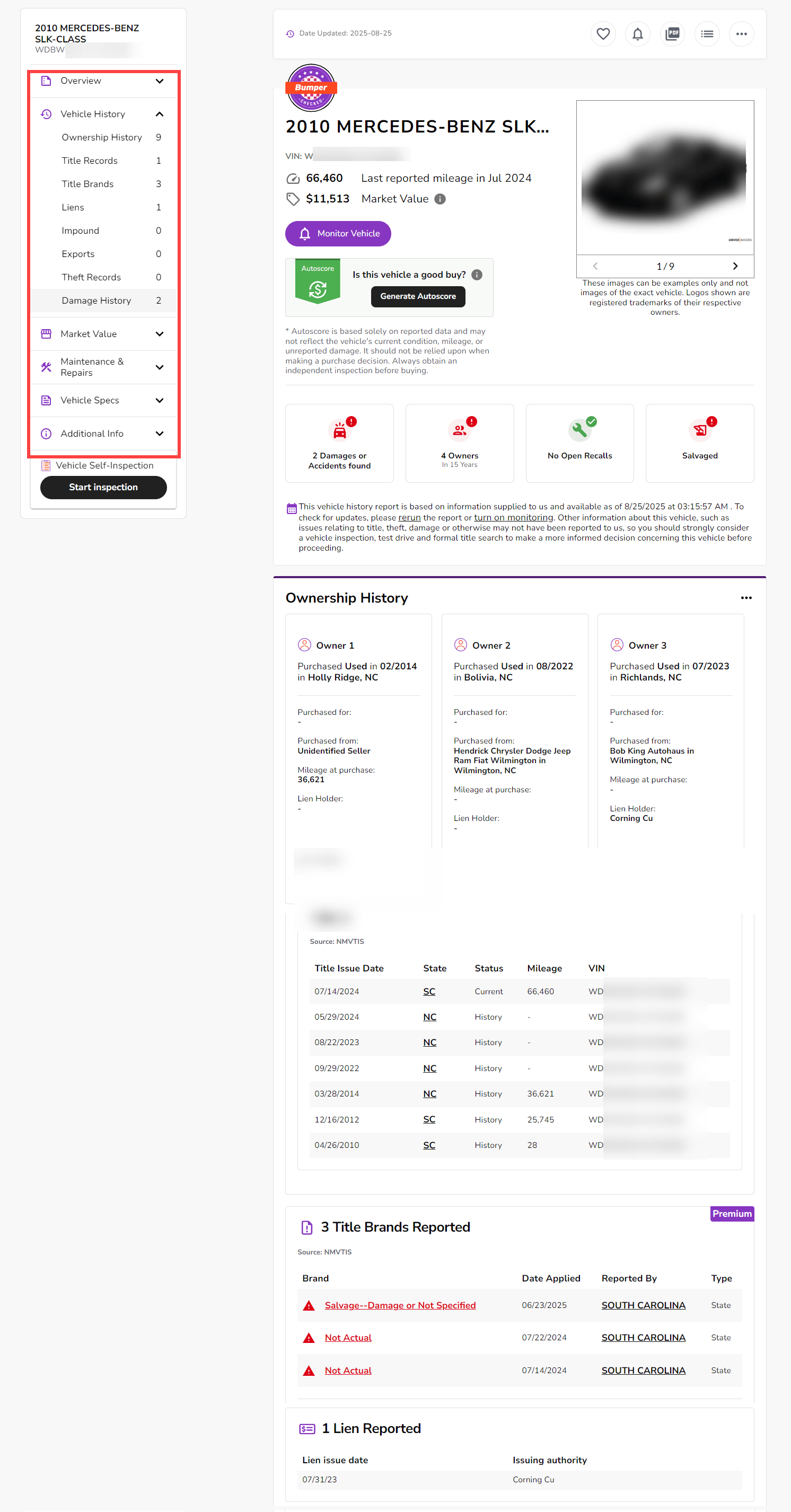
A CARFAX report also starts with a Quick Summary, giving you an overall snapshot of the vehicle. After that, it presents the details in chronological order, organized by owner.
🔔The two reports correspond to different VINs, so they can’t be directly compared.
Customer support
When it comes to customer support, Bumper can be more versatile in support options. If you run into any issues, you can reach their team in several ways:
- Phone: call +1-332-225-9745 if you prefer speaking with someone
- Email: send a message to support@bumper.com
- Contact form
With CARFAX, you can request help from their support team by filling out a detailed online form. However, they don’t provide phone support.
Mobile app
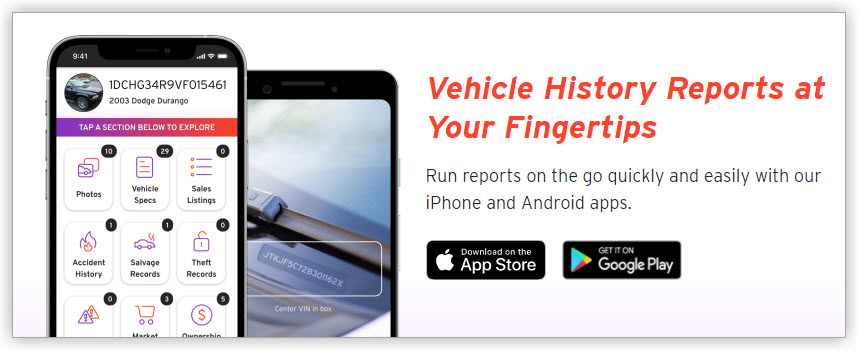
In addition to searching on their website, Bumper also offers a mobile app. This is a convenient option for buyers on the go. With the Bumper apps for iOS and Android, you can easily access everything Bumper offers right from your phone or tablet.
CARFAX also offers a mobile app, which you can use to run reports or search for used cars using various filters. However, some users have reported minor issues, for example, pictures of the car don’t always load when viewing a listing in the app, and some older cars may not be searchable through the app.
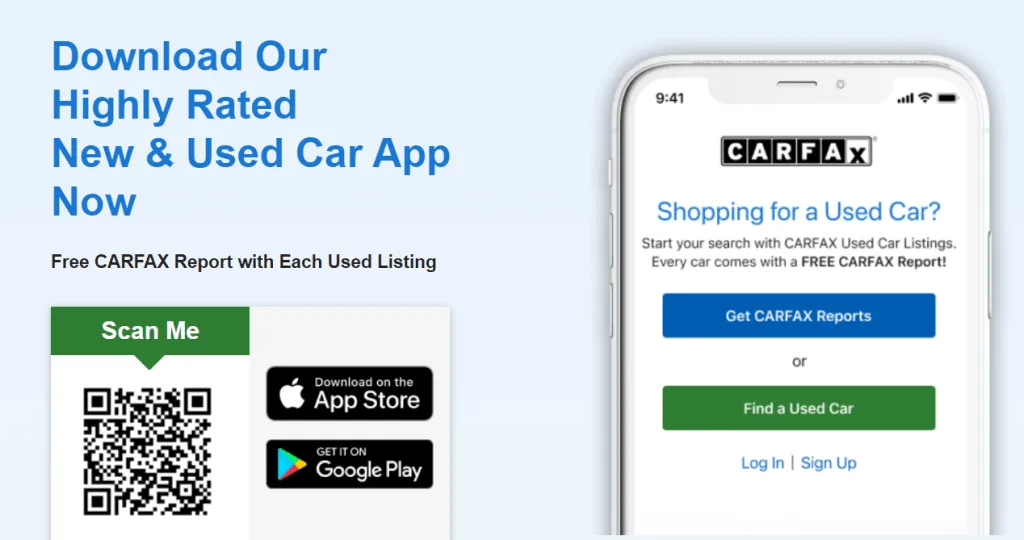
Wrapping up
There’s no denying that CARFAX changed the game when their website launched in 1996. For the first time, consumers across the U.S. could easily purchase detailed vehicle history information online. But times (and prices) have changed, and a traditional CARFAX report may no longer be the best option for everyone — especially since much of the same information can now be found elsewhere for less money.
Ultimately, the choice between Bumper and CARFAX depends on individual needs and preferences, such as whether you require certain specific information or how much you care about price. Of course, if possible, running both reports can also be a good strategy, as they may provide complementary insights.

 View all of Jocelyn Sun's posts.
View all of Jocelyn Sun's posts.